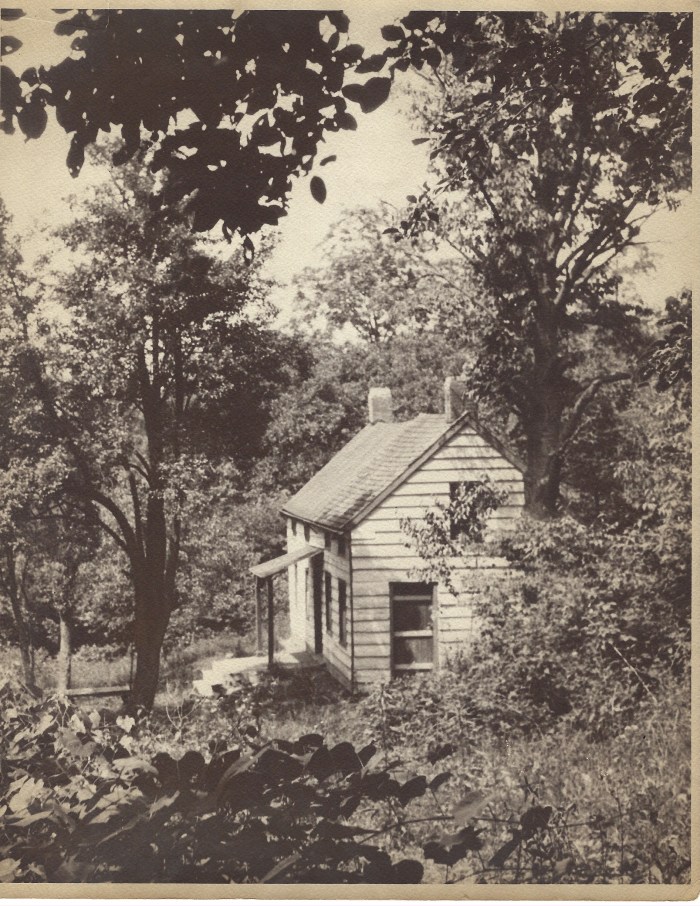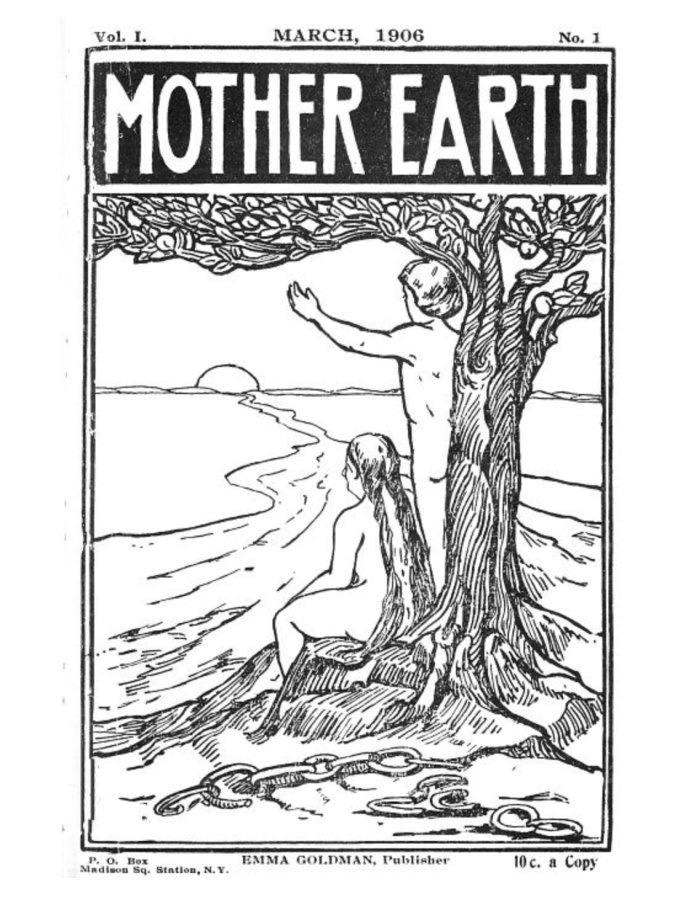
Courtesy of the Library of Congress.
Did you know that Emma Goldman, famous anarchist, had a country home on Allapartus Road in the early 20th century?
Do you even know who Emma Goldman was? Or what anarchy is? Don’t worry, most people I’ve tried to impress with this piece of Ossining history don’t know either.
So read on, MacDuff!
Now, today, Emma Goldman is more often thought of as a progressive feminist, an author, a magazine publisher, and an inspirational speaker. Her passionate advocacy for birth control, marriage reform, sexual freedom, worker’s rights, and vehement anti-war activism seems quite in keeping with movements of today.
But in her time, Emma Goldman made headlines as a “A Dangerous Woman”, “Red Emma” and “The High Priestess of Anarchy,” — just a few of the pejorative monikers applied to her.
Believing that “Fighting injustice and exploitation is all that mattered,” she tirelessly spoke out on behalf of the marginalized, the exploited and the oppressed.
Now, I have to delve into this anarchy thing before I go any further, because it’s essential to understanding what Emma Goldman was about.
Basically, anarchy (in the way that Goldman defined it) describes a society without any centralized authority. So, no rulers, government, laws — frankly, it’s a movement that I never found that interesting because it seems so irrational, so angry, and so violent. And perhaps it is on the surface, and violent acts have certainly been perpetrated in its name.
In 1893, when Goldman was imprisoned for “inciting to riot”, she gave a jailhouse interview to Nellie Bly, a reporter for The New York World, and explained why she was an anarchist and what she hoped to accomplish:
I am an Anarchist because I am an egotist. It pains me to see others suffer. I cannot bear it. Everything wrong, crime and sickness and all that, is the result of the system under which we live. Were there no money, and as a result, no capitalists, people would not be over-worked, starved and ill-housed, all of which makes them old before their time, diseases them and makes them criminals. To save a dollar the capitalists build their railroads poorly, and along comes a train, and loads of people are killed. What are their lives to him if by their sacrifice he has saved money?
In further researching this topic, I came upon this definition by Rebecca Solnit: “Anarchists are idealists, believing human beings do not need authorities or the threat of violence to govern them, but are instead capable of governing themselves by cooperation, negotiation, and mutual aid.”[1]
Between Goldman and Solnit’s explanations, on paper anarchism certainly seems like a utopian ideal but really – has there ever been such an idyllic civilization? Could it ever really exist? Did Emma Goldman meet any human beings? (Ooops, my cynicism is showing.)
But she truly believed this world was possible and pursued these ideals her entire life. And for all her fight and spirit and refusal to accept the status quo, Emma Goldman was an radical optimist, a passionate believer in the essential good of the human beings, if only the jackboot of authority was lifted from their necks.
Born in 1869 in Popelon, Lithuania, Goldman emigrated to Rochester, New York in 1885. The first job she would find was working in a sweatshop sewing men’s overcoats at a wage of $2.50 per week. (She marked this as the beginning of her advocacy for worker’s rights.)
According to her 1931 memoir Living My Life, Goldman was radicalized after the 1886 Haymarket Affair bombing.
Soon after this, Goldman would meet and fall in love with Alexander Berkman, an equally fiery anarchist and activist. In 1892, in response to the strikes in Andrew Carnegie’s steel mills in Homestead, Pennsylvania where Pinkerton guards were brought in to quell the conflict with billy clubs and bullets, Berkman decided to follow the anarchist’s playbook, deploy “targeted violence,” and murder Carnegie’s right hand man Henry Clay Frick. (The idea was that this murder would inflame the masses, causing revolution to take place, thus toppling capitalism. Hmmm . . . )
Frick survived, and Berkman served 14 years in prison for attempted murder. Goldman was initially implicated, but there was no evidence with which to charge her. But this incident would mark her as a violent, dangerous person, one the authorities would trail and watch closely.
Knowing this, she still toured the country giving speeches, encouraging workers to “Demonstrate before the palaces of the rich; demand work. If they do not give you work, demand bread. If they deny you both, take bread.” After one such lecture, she was arrested, convicted for “inciting to riot,” and spent a year imprisoned on Blackwell’s (now Roosevelt) Island, New York.
While serving out her term, she worked as an amateur nurse in the prison ward. Upon release, she traveled to Europe for formal nursing and midwife training and would fall back on these skills throughout her life to support herself.
Ossining Connection
In 1905, a wealthy friend, Bolton Hall, purchased a small farm at the top of Allapartus Road (technically in New Castle, just outside the Ossining border) and gave it to Goldman.

Courtesy of Gareth Hougham
She would come to this little farmhouse to decompress, to cook, to garden and to write. As she described it “The house was old and shaky, and there was no water on the premises. But its rugged beauty and seclusion, and the gorgeous view from the hill, made up for what was lacking in comfort.”
Alexander Berkman would join her there after his release from prison. Though they would discover that their romantic relationship was irretrievably broken by their time apart, they would remain professional colleagues for many years.
It’s around this time that Goldman found her radical periodical Mother Earth. She would serve at various times as its publisher, head writer, and editor. She attracted many of the progressive/radical writers and artists of the time, such as Floyd Dell, Louise Bryant (Diane Keaton played her in Reds), Man Ray, and Margaret Sanger.

(Fun fact, Croton resident Max Eastman would found his socialist magazine The Masses in 1911 and employ some of the same writers and artists. And both magazines would be shuttered in 1917 by the US Government for violating the Espionage Act for their radical anti-war/anti-conscription stances.)
In addition to putting out her monthly periodical, Goldman spent the 1910s on lecture tours speaking on topics ranging from anarchism, birth control, homosexuality to pacifism:

Courtesy of JWA.org
She would get arrested several more times for violating both the Comstock and Espionage acts – and this last one would cause her deportation to Russia in 1919.
She died in Toronto in 1940 at the age of 70, after a series of strokes. However, even death could not silence her: Her body would be transported to Forest Park, Illinois to be buried near those who were executed for the Haymarket bombing.
Her final words, chiseled on her gravestone are: “Liberty will not descend to a people. A people must raise themselves to liberty.”
[1] Solnit, Rebecca A Paradise Built in Hell, 2010
Fascinating, Caroline! I didn’t know anything about her until your incredible exhibit at Bethany. Imagine what we’d find if we could dig into every little bit of “truth” published in our History books.
LikeLike
Thank you!!
LikeLike
Thank you for this. Very pleased to see another early 20th Century progressive/leftist connection to the area. You also may be interested in the below link to a story from the Baltimore Banner – fascinating for itself, but also for its connection to an Ossining family about which you have previously written:
https://urldefense.com/v3/__https://www.thebaltimorebanner.com/culture/lifestyle/spaeth-underhill-love-letters-baltimore-WCNUBB6QEVEJDGRUXVHKF7JAGI/__;!!Mb3P9oM!HRKb00Hy56YiVsw-VgWJC06XZLsZdaQCSh1Yi-VvMmMahO-D6qdLixl7VkllnA6JmMQNld3r7x3GV-AhviN6inlOW6TINw$ ________________________________
LikeLike
Wow, this Banner story is fantastic! And I knew Robert Underhill was a mountaineer, but didn’t know any of the other details about him. Perhaps this might add some illumination to the reason that his sister Ruth tried to get as far away from her family as possible?
LikeLike
Perhaps.
The same publication just ran a follow-up story about the descendants of both protagonists, but it did not add much to the original story.
LikeLike